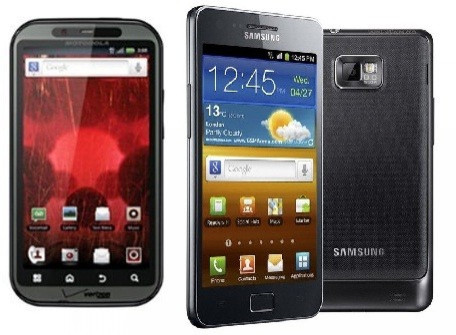Unforgettable Flaws That Could Nip Motorola Droid Bionic’s Success in the Bud [VIDEO]

Motorola’s high-profile Android-based smartphone, the Droid Bionic, has finally hit the markets and has already been tagged as a major threat to the iPhone 5’s success when it arrives in the U.S.
The smartphone has been touted as one of the most powerful phones on Verizon's 4G LTE network and easily reigns supreme over other handsets like the Samsung Droid Charge and HTC Thunderbolt which run on Verizon LTE. Best Buy, in a previously released promo in July, called it an all-powerful, unstoppable machine.
The Smartphone comes with a 4.3-inch, 540 x 960 pixels, TFT capacitive touchscreen. The device has an 8 MP, 3264x2448 pixels, autofocus, dual-LED flash rear camera with video recording at 1080p. A VGA camera has also been provided in the front. The smartphone runs on Android 2.3.4 or Gingerbread juice and is powered by a dual-core 1GHz ARM Cortex-A9 processor, ULP GeForce GPU, Tegra 2 AP20H chipset.
Other notable features of the device include accelerometer sensor for UI auto-rotate, touch-sensitive controls, YouTube, Google Talk, Document viewer and Adobe Flash 10.1.
But there are unmarked flaws with the smartphone that could easily spell doom for its prospects. Here are a few flaws that Motorola may want to correct to gain a hold on the market.
One of the main issues is the display size of the smartphone. The Droid Bionic has a 4.3-inch display with a screen resolution of 960x540. But there have been several complaints about the device’s pixel arrangement, which has been a real dampener.
A previous PC Magazine report said that The pixel arrangement makes colored lines look subtly fuzzy. This could be a major problem area for Motorola if consumers start comparing it with the light of the crisp Super AMOLED display which Samsung Droid Charge and Galaxy S2 boast. Apple also offers superior image quality with its Retina Display. Motorola needs to counter this problem if it is to compete against the likes of Apple iPhone 5 and Samsung Galaxy S2.
Another burning problem is the price of the Verizon LTE-based device, which, according to many, is pretty steep. The handset is currently priced at $300, far above the price tag of most of the smartphones in the market, including HTC Sensation, iPhone 4 and the upcoming Samsung Galaxy S2, which are mostly priced at $200. But $300 is just the price of the Motorola device, while the whole Droid Bionic kit, which includes a laptop dock and a HDMI port, will cost you around $400 extra. The laptop dock costs $300 and the HD station dock is priced at $100.
Motorola’s previous smartphone, Atrix, which was the first to optimize the ecosystem of docks, is priced at $99. However, according to a previous Geek report, if you are looking forward to using Atrix’s dock with the Droid Bionic to save money, it is probably a bad idea as the devices are very different from each other. The HTC Thunderbolt, which also runs on Verizon’s LTE network, is priced at $250. The Droid Bionic can face an uphill battle in the smartphone market if the price of the device remains unaltered as most of the smartphones, with the same or higher specifications compared to the Motorola-based device, are available at $199.
Previously it was rumored that the Droid Bionic would sport a 1.2 or 1.5 GHz processor. But the smartphone has arrived with a 1 GHz processor that may cause a few hiccups for the new smartphone as all the upcoming smartphones in the same class will arrive with at least a 1.2 GHz processor.
Both the Samsung Galaxy S2 and HTC Sensation are powered by 1.2GHz dual-core chipsets. Other upcoming smartphones like HTC Vigor, which is rumored to be a Verizon LTE phone, is expected to sport a 1.5 GHz dual-core processor. Another HTC handset, Holiday, is rumored to don a 1.2GHz Qualcomm MSM8660 processor and is destined for AT&T’s 4G network. The Nexus Prime is also rumored to feature a 1.5 GHz chipset.
There are many coming smartphones that could spoil Droid Bionic’s party in the U.S. Thissmartphone, had it arrived a little earlier, would have gained the early mover’s momentum. Now, with smartphones like Apple’s iPhone 5 and the Samsung Galaxy S2 hanging in the horizon, chances are very limited for the Bionic to establish a strong hold on the market.
The Droid Bionic, in reality, has just a month before the next batch of super/smartphones arrive to claim their place in the crowded market.
© Copyright IBTimes 2024. All rights reserved.





















